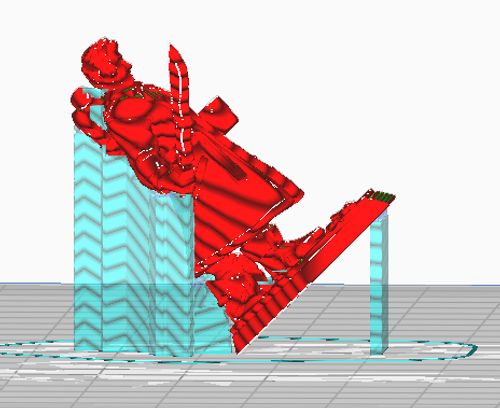Printing minis for a board or tabletop game like DnD on an FDM printer is a tricky task. Things that don't matter when printing engineering parts like aesthetics, blobbing, stringing etc. are all impactful on how the mini looks. Not to mention, we have many more dificult-to-print shapes, like overhangs, long thin pieces like swords and tools, and hard-to-reach places like between capes and legs. All this led to a fun challenge on setting up my 3D printer for success.
I won't go too into detail on my discovery process, as this is more to record my settings for my own future use.
I used a 0.2mm nozzle running at 25 mm/s, which is half of the default ender 3 50mm/s. I set the nozzle temp to 195 degrees Celsius, 200 for the first layer. The bed was set to 65 degrees Celsius. Supports were turned on, with a 5% support density and a relatively high angle threshold of 65 degrees. Of all the settings, that angle is my most dubious. But it has worked so far.
The most interesting "setting," and hardest to convey, is how I oriented the minis in my slicer. I tilted them back about 45 degrees, as shown below. This angle allows the auto-generated supports to be easier to break for a few reasons. First, most end up between the printbed and the model, not two parts of the model. This allows for more freedom in cutting and pulling, as there is an unrestrained end and you don't have to put pressure on the mini itself when removing supports. Second, you can often find an angle where swords and other tools don't need support. These parts often do when printed upright, and it is very difficult to remove the supports without also breaking the sword or tool.

All in all, I'm happy enough with my settings. I'm hoping after priming and painting the printing artifacts will become less noticeable. If you have any suggestions, or find that these suggestions don't work, feel free to email me at the address below.